Endeavors highlight commitment to consistency, quality of care

By Eric Lamarre, MD; Joseph Scharpf, MD; and Brian B. Burkey, MD
Cleveland Clinic is a non-profit academic medical center. Advertising on our site helps support our mission. We do not endorse non-Cleveland Clinic products or services. Policy
Recent activity in the Section of Head and Neck Surgery and Oncology in Cleveland Clinic’s Head & Neck Institute has centered on two particular areas of laryngeal cancer treatment: salvage laryngectomy for recurrent laryngeal cancer and the development of a Cleveland Clinic Care Path for laryngeal cancer. The latter effort should make the treatment of laryngeal cancer more effective and efficient, both at our institution and at other sites nationally, and fits well with the emphasis on patient safety that is now a pre-eminent issue in the United States.
Laryngeal squamous cell carcinoma is highly radiosensitive, with reported postirradiation locoregional control rates of 73 to 95 percent in patients with early-stage disease. For recurrent disease, however, the focus of treatment shifts to salvage surgical procedures, which are capable of achieving ultimate tumor control in most cases. Our group at the Head and Neck Institute has comprehensively evaluated our experience with salvage laryngeal surgery.
The goal of our study was to determine the effectiveness of salvage surgery for recurrent laryngeal cancer after initial nonsurgical treatment of both early and advanced laryngeal carcinomas. We also looked at outcomes in patients who underwent neck dissection.
Time to recurrence. We found that the median time to recurrence from initial diagnosis was 11 months in advanced-stage cancers and 15 months in early-stage tumors. This finding emphasizes the importance of frequent follow-up for at least two years after initial treatment and extended long-term follow-up thereafter.
Locoregional control and survival. The overall locoregional control rate after salvage laryngectomy was 70 percent, and overall five-year disease-specific survival (DSS) ranged from 55 percent to 70 percent, depending on the initial staging. Both of these findings are similar to five-year DSS previously reported in the literature. In cases of treatment failure, there was no significant correlation between long-term survival and the staging of either the initial tumor or the recurrent tumor.
We found no significant difference in five-year DSS between patients with early-stage cancer who had been initially treated with radiotherapy alone and those with advanced-stage cancer who had been initially treated with both radio- and chemotherapy. Therefore, once tumors recur, the type of initial treatment plays little or no role in long-term prognosis.
Neck dissection. Currently, the criteria for neck dissection in the treatment of recurrent laryngeal cancer are not well established. In our series, 82 percent of patients underwent neck dissection to treat their recurrence. The group that did not undergo neck dissection consisted of only a small portion of the overall series (21 percent of the early-stage group). They were highly selected patients whose treatment was discussed in a multidisciplinary review of physical examination findings and radiologic imaging. In our series, a surprisingly high rate of occult nodal disease (30.5 percent) was found among patients undergoing neck dissection, and this rate of occult nodal disease may argue for stronger consideration of neck dissection in all patients undergoing salvage surgery.
Management of laryngeal cancer is complex, as it spans multiple disciplines in both outpatient and inpatient settings. It involves substantial utilization of resources and has a significant impact on the patient’s overall daily function and quality of life. In general, the coordination between ancillary services and resource utilization during a patient’s treatment journey is variable.
Clinical care pathways for head and neck cancer in general have proved valuable in reducing resource utilization while improving quality of care. Yet despite these documented improvements, until now no care pathways have been developed specifically for laryngeal cancer. In view of the elaborate surgical procedures involved, the high degree of postoperative morbidity, the prolonged hospital stays, the ancillary services required and the complexity of post discharge care, laryngeal cancer is an ideal subject for a care pathway.
Members of the Head & Neck Institute have created a Cleveland Clinic Care Path to standardize the complete course of management for patients with laryngeal cancer. It is our goal to establish a Disease-Specific Care Certification Program for The Joint Commission, as no nationally accredited program for laryngeal cancer currently exists.
Our collaboration features evidence-based guidelines that span all the involved disciplines. This care path not only standardizes management and decrease variability among providers, it will identify and eliminate redundancies, resulting in a more effective use of resources. Cleveland Clinic Care Paths are more than just guidelines; they show how to implement guidelines and make them operational, drawing on a highly integrated model of care (Figure).
Our Laryngeal Cancer Care Path begins with the diagnosis and extends to oncologic surveillance five years after completion of treatment. It is fully integrated within our electronic medical record system. With continuous direct feedback from patients, our intention is to enhance patients’ overall experience.
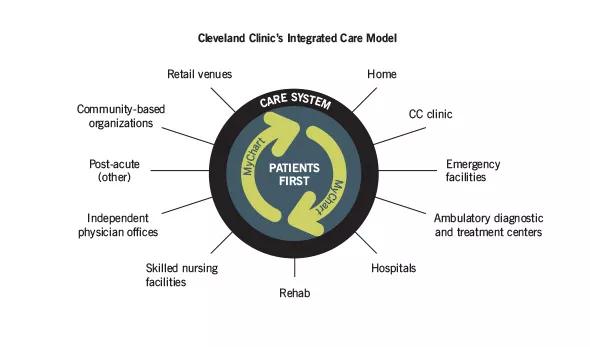
Figure. Schematic depicts the multifaceted nature of integrated care that serves as the model for Cleveland Clinic Care Paths.
Dr. Lamarre (lamarre@ccf.org) is a staff physician in the Head & Neck Institute’s Section of Head and Neck Surgery and Oncology.
Dr. Scharpf (scharpj@ccf.org) is a staff physician in the Section of Head and Neck Surgery and Oncology.
Dr. Burkey (burkeyb1@ccf.org) is Head of the Section of Head and Neck Surgery and Oncology

Research on children with UHL explores the quality-of-life benefits and outcomes of cochlear implants
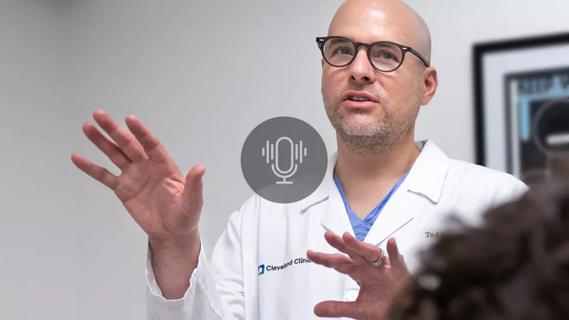
A look at how custom-fitted oral appliances work and when they’re a good fit for patients
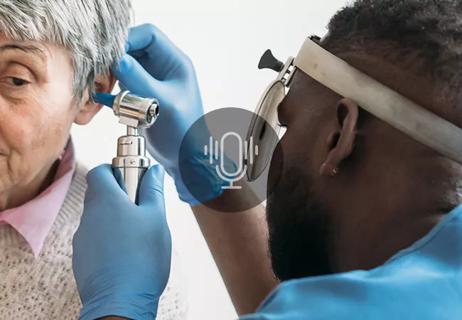
Hearing loss and its treatments are often misunderstood by both the public and healthcare professionals
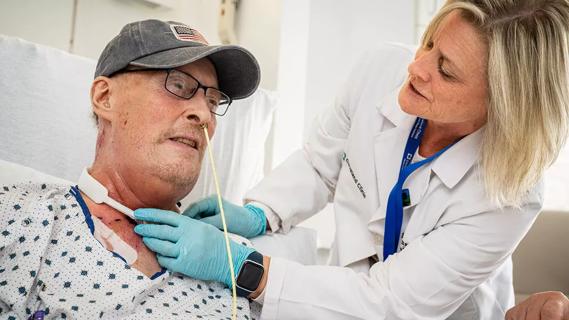
Modified Barium Swallow Study and Flexible Endoscopic Evaluation of Swallowing can both be used to diagnose dysphagia, but it’s important to understand their advantages and disadvantages
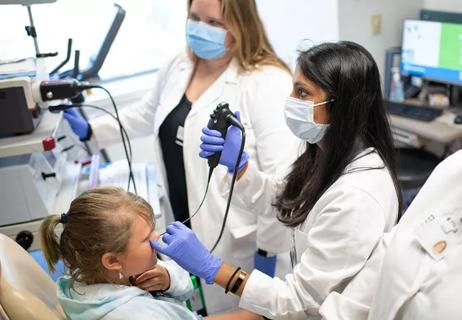
By working in tandem, a pediatric otolaryngologist and speech-language pathologist can diagnose conditions and develop treatment plans in the same visit

Because EILO is a relatively new condition, educating care providers to help diagnose and treat earlier is critical

A Cleveland Clinic speech-language pathologist describes the techniques she uses with her patients and how new research reinforces that patients should be driving care decisions

The treatment is simple and effective for many patients, but more research is needed to determine the exit-strategy from repetitive injections